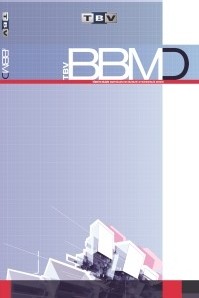Mobil Oyun Yazılım Süreçlerinde Canlandırma Kütüphaneleri Kullanımının Değerlendirilmesi
Mobil oyun, Oyun yazılımı, Oyun yazılımı geliştirme süreci, canlandırma
___
- R. Ramadan ve Y. Widyani, “Game development life cycle guidelines”, içinde 2013 International Conference on Advanced Computer Science and Information Systems (ICACSIS), Eyl. 2013, ss. 95-100. doi: 10.1109/ICACSIS.2013.6761558.
- E. Adams, Fundamentals of game design. Pearson Education, 2014.
- A. Osborne O’Hagan, G. Coleman, ve R. V. O’Connor, “Software Development Processes for Games: A Systematic Literature Review”, içinde Systems, Software and Services Process Improvement, Berlin, Heidelberg, 2014, ss. 182-193. doi: 10.1007/978-3-662-43896-1_16.
- M. Borg, V. Garousi, A. Mahmoud, T. Olsson, ve O. Stålberg, “Video Game Development in a Rush: A Survey of the Global Game Jam Participants”, IEEE Trans. Games, c. 12, sy 3, ss. 246-259, Eyl. 2020, doi: 10.1109/TG.2019.2910248.
- C. M. Kanode ve H. M. Haddad, “Software Engineering Challenges in Game Development”, içinde 2009 Sixth International Conference on Information Technology: New Generations, Nis. 2009, ss. 260-265. doi: 10.1109/ITNG.2009.74.
- E. Murphy-Hill, T. Zimmermann, ve N. Nagappan, “Cowboys, ankle sprains, and keepers of quality: how is video game development different from software development?”, içinde Proceedings of the 36th International Conference on Software Engineering, New York, NY, USA, May. 2014, ss. 1-11. doi: 10.1145/2568225.2568226.
- B. Berg Marklund, H. Engström, M. Hellkvist, ve P. Backlund, “What Empirically Based Research Tells Us About Game Development”, Comput. Games J., c. 8, sy 3, ss. 179-198, Ara. 2019, doi: 10.1007/s40869-019-00085-1.
- J. Gregory, Game engine architecture. crc Press, 2018.
- Unity, “Unity - Manual: Sprites”. https://docs.unity3d.com/Manual/Sprites.html (erişim Kas. 12, 2021).
- J. Lehtonen, “From 2D-sprite to skeletal animation: boosting the performance of a mobile application”, Turun ammattikorkeakoulu, 2016.
- Esoteric Software, “Spine: Oyunlar için 2Boyutlu İskelet Animasyonu”. http://tr.esotericsoftware.com/ (erişim Kas. 12, 2021).
- M. Tepekule, E. Şimşirli, M. A. Sakarya, R. Diriman, ve G. Kardaş, “On the use of Spine Animation Library for the Game Software Development: An Experience Report”, içinde 2020 Turkish National Software Engineering Symposium (UYMS), Eki. 2020, ss. 1-5. doi: 10.1109/UYMS50627.2020.9247012.
- F. Thomas ve O. Johnston, “The Illusion of Life: Disney Animation. Disney Editions”. 1995.
- R. Ciesla, “Mostly codeless game development”, Berkeley CA Apress, 2017.
- K. Myller, “Use of Spine software in video game character creation”, Karelia University of Applied Sciences, 2018.
- P. Stacey ve J. Nandhakumar, “A temporal perspective of the computer game development process”, Inf. Syst. J., c. 19, sy 5, ss. 479-497, 2009, doi: 10.1111/j.1365-2575.2007.00273.x.
- C. Mihale-Wilson, P. Felka, O. Hinz, ve M. Spann, “The Impact of Strategic Core-Component Reuse on Product Life Cycles”, Bus. Inf. Syst. Eng., Haz. 2021, doi: 10.1007/s12599-021-00706-y.
- A. Ubillis, “Evaluation of Sprite Kit for iOS game development”, Linköpings universitet, 2014.
- Apple, “SpriteKit”, Apple Developer. https://developer.apple.com/spritekit/ (erişim Kas. 12, 2021).
- Masomo, “Masomo”. https://www.masomo.com/ (erişim Kas. 12, 2021).
- “Türkiye oyun sektörü nasıl yabancı yatırımcının gözdesi haline geldi? - BBC News Türkçe”. Erişim: Kas. 12, 2021. [Çevrimiçi]. Erişim adresi: https://www.bbc.com/turkce/haberler-dunya-54275482#:~:text=T%C3%BCrkiye'de%20oyun%20geli%C5%9Ftirici%20%C5%9Firket,5%20milyar%20dolar%C4%B1%20ge%C3%A7mesi%20bekleniyor.
- A. Phillips, Animate to Harmony: The Independent Animator’s Guide to Toon Boom. CRC Press, 2014.
- J. Cooper, Game anim: video game animation explained. CRC Press, 2021.
- T. P. Thesen, “Reviewing and Updating the 12 Principles of Animation”, Animation, c. 15, sy 3, ss. 276-296, Kas. 2020, doi: 10.1177/1746847720969919.
- G. Stuart, “Basic Animation”, içinde Introducing JavaScript Game Development, Springer, 2017, ss. 83-92.
- T. M. Soikun ve Ag. A. Ag. Ibrahim, “Kansei Engineering Approach in Designing Appealing Computer Animation Character”, içinde Proceedings of the 7th International Conference on Kansei Engineering and Emotion Research 2018, Singapore, 2018, ss. 470-478. doi: 10.1007/978-981-10-8612-0_49.
- N. Amani ve A. Yuly, “3D modeling and animating of characters in educational game”, içinde Journal of Physics: Conference Series, 2019, c. 1193, sy 1, s. 012025.
- H. Wilander, “Player experience from 3D game components: A theoretical and empirical look at computer graphics in practice”, Linköping University, 2019.
- T. Ribeiro ve A. Paiva, “The Practice of Animation in Robotics”, içinde Modelling Human Motion: From Human Perception to Robot Design, N. Noceti, A. Sciutti, ve F. Rea, Ed. Cham: Springer International Publishing, 2020, ss. 237-269. doi: 10.1007/978-3-030-46732-6_12.
- J. Ritchie, “The 12 Principles of Animation (With Examples)”, IdeaRocket, Tem. 19, 2017. https://idearocketanimation.com/13721-12-principles-of-animation-gifs/?nab=0 (erişim Kas. 13, 2021).
- C. Wohlin, P. Runeson, M. Höst, M. C. Ohlsson, B. Regnell, ve A. Wesslén, Experimentation in software engineering. Springer Science & Business Media, 2012.
- J. Nielsen, “How many test users in a usability study”, Nielsen Norman Group, c. 4, sy 06, 2012.
- M. Challenger, G. Kardas, ve B. Tekinerdogan, “A systematic approach to evaluating domain-specific modeling language environments for multi-agent systems”, Softw. Qual. J., c. 24, sy 3, ss. 755-795, Eyl. 2016, doi: 10.1007/s11219-015-9291-5.
- S. Arslan ve G. Kardas, “DSML4DT: A domain-specific modeling language for device tree software”, Comput. Ind., c. 115, s. 103179, Şub. 2020, doi: 10.1016/j.compind.2019.103179.
- T. Z. Asici, B. T. Tezel, ve G. Kardas, “On the use of the analytic hierarchy process in the evaluation of domain-specific modeling languages for multi-agent systems”, J. Comput. Lang., c. 62, s. 101020, Şub. 2021, doi: 10.1016/j.cola.2020.101020.
- A. Khalilipour, M. Challenger, M. Onat, H. Gezgen, ve G. Kardas, “Refactoring Legacy Software for Layer Separation”, Int. J. Softw. Eng. Knowl. Eng., c. 31, sy 02, ss. 217-247, Şub. 2021, doi: 10.1142/S0218194021500066.
- O. F. Alaca, B. T. Tezel, M. Challenger, M. Goulão, V. Amaral, ve G. Kardas, “AgentDSM-Eval: A framework for the evaluation of domain-specific modeling languages for multi-agent systems”, Comput. Stand. Interfaces, c. 76, s. 103513, Haz. 2021, doi: 10.1016/j.csi.2021.103513.
- ISSN: 1305-8991
- Başlangıç: 2005
- Yayıncı: Türkiye Bilişim Vakfı
Eleme Turnuvalarında Seribaşı Eşlemelerinin Sayılması ve Sayımlanması
Can ATILGAN, Mehmet Emin DALKILIÇ
Telea ve Naiver Stokes Algoritmaları Kullanılarak Görüntülerdeki Bozulmaları Düzeltme
Öğrenen ve Öngören Varlık Yonetimi
Kağan KÜÇÜK, Fatih KAHRAMAN, Mustafa Ersel KAMAŞAK, Eşref ADALI
Mobil Oyun Yazılım Süreçlerinde Canlandırma Kütüphaneleri Kullanımının Değerlendirilmesi
Muzaffer TEPEKULE, Mehmet Ali SAKARYA, Rudi DİRİMAN, Kaya OĞUZ, Geylani KARDAŞ
Metin Benzerliği Algoritmaları ile Veri Tekilleştirme: Oteller Veri Tabanında Bir Uygulama
